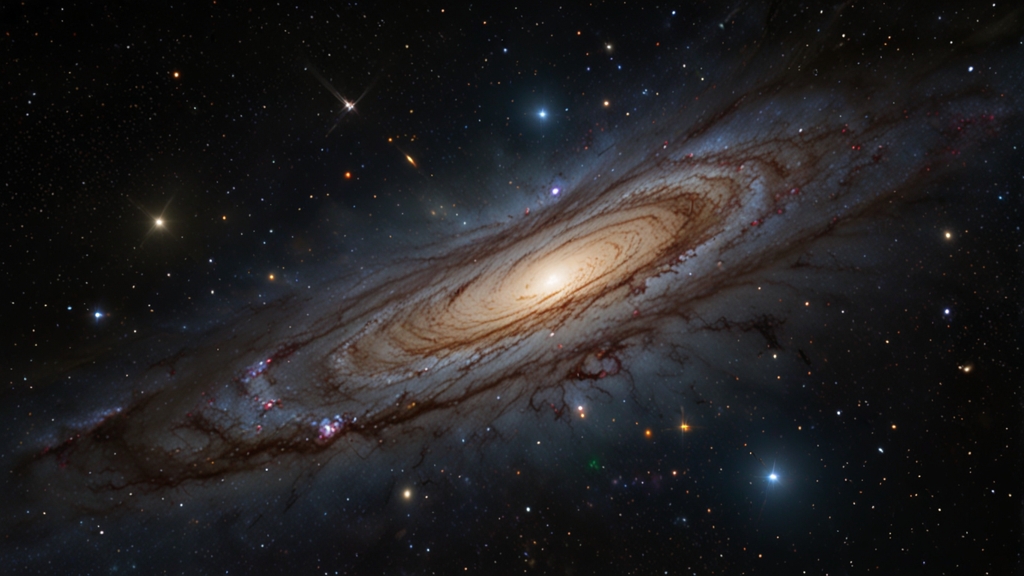The Most Distant Galaxies: What They're Teaching Us About the Universe's Birth
As our technological capabilities have advanced, astronomers have been able to peer deeper and deeper into the cosmos. In doing so, they have unearthed galaxies that are not just far away in terms of distance, but also in time. These distant galaxies are essentially cosmic time capsules, offering a glimpse into the formative years of the universe. The study of these ancient systems is providing invaluable insights into how the universe came to be, and how it has evolved over billions of years.
The Quest for the Most Distant Galaxies
The search for the most distant galaxies has been a long-standing quest in the field of astronomy. The Hubble Space Telescope, launched in 1990, revolutionized our ability to explore the universe. Over the years, Hubble's observations have yielded the discovery of numerous distant galaxies, some of them seen as they were over 13 billion years ago, just a few hundred million years after the Big Bang.
One of the significant breakthroughs came with the advent of the James Webb Space Telescope (JWST). Scheduled for launch in the 2020s, the JWST is expected to push the boundaries even further, offering unprecedented views of the early universe. The sensitive instruments aboard these telescopes enable astronomers to detect the faint light from galaxies located billions of light-years away, effectively looking back in time to the universe's infancy.
Reconstructing the Universe's Early Days
The light from these distant galaxies has traveled for billions of years to reach us, allowing astronomers to study them as they appeared shortly after the Big Bang. By observing these ancient systems, scientists can piece together the events that occurred during the first few hundred million years of the universe's existence. This period, known as the "Epoch of Reionization," is crucial for understanding how the universe transitioned from a dark, opaque state to the luminous cosmos we see today.
“By examining the light from these distant galaxies, cosmologists can learn about the processes that governed the early universe. This helps answer fundamental questions about the nature of dark matter, the role of dark energy, and the formation of cosmic structures.” – Dr. Emily Levesque, Astrophysicist.
The Role of Advanced Instruments and Techniques
Modern astronomers rely on a combination of ground-based and space-based telescopes to hunt for distant galaxies. Ground-based observatories like the Atacama Large Millimeter/submillimeter Array (ALMA) have offered significant contributions by observing the cold gas and dust in these early galaxies. When combined with the capabilities of space telescopes such as Hubble and the upcoming JWST, researchers can obtain a more comprehensive understanding of the early cosmos.
Advanced techniques like gravitational lensing have also been instrumental. Massive objects like galaxy clusters can bend and magnify the light from more distant galaxies behind them, acting as natural telescopes that allow astronomers to observe galaxies that would otherwise be too faint to detect. These methods, combined with powerful instrumentation, are enabling scientists to push the limits of our observable universe.
What We've Learned So Far
The study of distant galaxies has already provided several groundbreaking insights. For instance, these galaxies tend to be smaller and more irregular compared to their modern counterparts, suggesting that galaxies have grown and evolved significantly over time. Observations have also revealed the presence of heavy elements, indicating that star formation and stellar evolution were already well underway within the first billion years after the Big Bang.
“The discovery of heavy elements in these early galaxies tells us that the first stars must have formed, lived their lives, and died, enriching the universe with the building blocks for subsequent generations of stars and planets.” – Dr. Avi Loeb, Theoretical Physicist.
The Future: Unveiling More Cosmic Secrets
As technology continues to advance, the study of the most distant galaxies will only become more exciting and revealing. The James Webb Space Telescope, with its enhanced sensitivity and resolution, is anticipated to transform our understanding of the early universe. It aims to uncover details about the formation of the first stars, the development of galaxies, and the mysterious dark ages that preceded the Epoch of Reionization.
Furthermore, upcoming missions and next-generation observatories such as the Extremely Large Telescope (ELT) and the Thirty Meter Telescope (TMT) will provide even more powerful tools for astronomers. These instruments promise to extend our reach, unveiling secrets from the furthest corners of the cosmos and offering a more detailed picture of the universe's birth and evolution.
The quest to understand the universe's origins is continually evolving, and each new discovery brings us closer to answering some of the most profound questions in science. The study of the most distant galaxies remains at the forefront of this exploration, illuminating the path to comprehending our cosmic beginnings.









